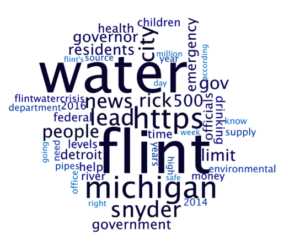Water has been central to our work for decades. Whether we’re fighting to close a dirty and outdated coal plant in Nevada, advocating for forest protection in New Jersey, or promoting women’s health in the Global South, we know that no community or landscape can thrive without clean, safe and reliable water.
Here in the United States, it’s something many people take for granted. You turn on the taps, and water flows. Studies have shown that three quarters of U.S. residents don’t know where their water comes from, and more than half don’t know how much it costs.
But that is all changing. The ongoing drought in the West and Flint water crisis have created an unprecedented level of concern about water supply and safety. Recent polls by the Associated Press and Value of Water Coalition show that just half of Americans are confident in the quality of their tap water and the safety of the nation’s water infrastructure.
The data show that low income communities and communities of color are more worried about water contamination, and recent events show that their concerns are justified. While Flint has been grabbing all the headlines, it is unfortunately not the only community suffering from unsafe or unreliable water. From wells running dry in East Porterville California to uranium-laced rivers on Navajo Nation lands, water injustice is a real and pressing problem.
There are groups all over the country that have fought for water justice for decades. Many are community-based organizations that lack the bandwidth to engage the nationwide conversation. We were eager to support them, and started by doing a bit of research on what water justice stories are playing out nationally in both traditional and digital media. Here is what we learned:
 There is a robust and growing conversation. In the past six months, there have been more than 48,000 news stories about water justice, from CNN to the New York Times, and over 1.2 million tweets. As the word cloud to the right shows, Flint is far and away the top storyline.
There is a robust and growing conversation. In the past six months, there have been more than 48,000 news stories about water justice, from CNN to the New York Times, and over 1.2 million tweets. As the word cloud to the right shows, Flint is far and away the top storyline.
- The Twitter conversation is being driven by social justice groups, public figures and media organizations, including: Van Jones, @NAACP, Michael Moore, Detroit Free Press and Michigan United. Individuals like @flintvictim are helping to put a human face on the story.
- The Twitter conversation is highly fragmented. There are dozens of hashtags in use by activists, electeds, and journalists. The six most popular for Flint are #Flint, #FlintWaterCrisis, #Flintwater, #JusticeforFlint, #FlintRising, and #FlintLivesMatter. On water justice more broadly, we are seeing #right2water, #RighttoWater, #agua4all, and #WaterJustice.
Somewhere a kid is in jail over a dime bag of weed. But no one is behind bars for poisoning an entire city of children. #FlintWaterCrisis
— David A. Love (@davidalove) January 18, 2016
- The spotlight on Flint is also shedding light on other towns suffering from unsafe and unreliable water. There been 6825 tweets and 195 news stories about towns from California to Ohio to Vermont that may be “the next Flint.”
The next Flint? A town in Vermont has found serious problems with its water https://t.co/RidDe7nhYD pic.twitter.com/IwNV7NuWHT
— The New York Times (@nytimes) March 15, 2016
So what can we do to advance water justice? Support community based organizations in your area. Urge Michigan to create a relief fund for victims of the Flint water crisis. Join Indigenous Environmental Network and dozens of other organizations fighting to break free from fossil fuels to reduce water and air pollution as well as climate impacts that disproportionately harm low income communities and communities of color. And share your ideas for connecting the dots in the comments section below, or tweet us at @RMedia.
—Nicole Lampe and Jade Begay
